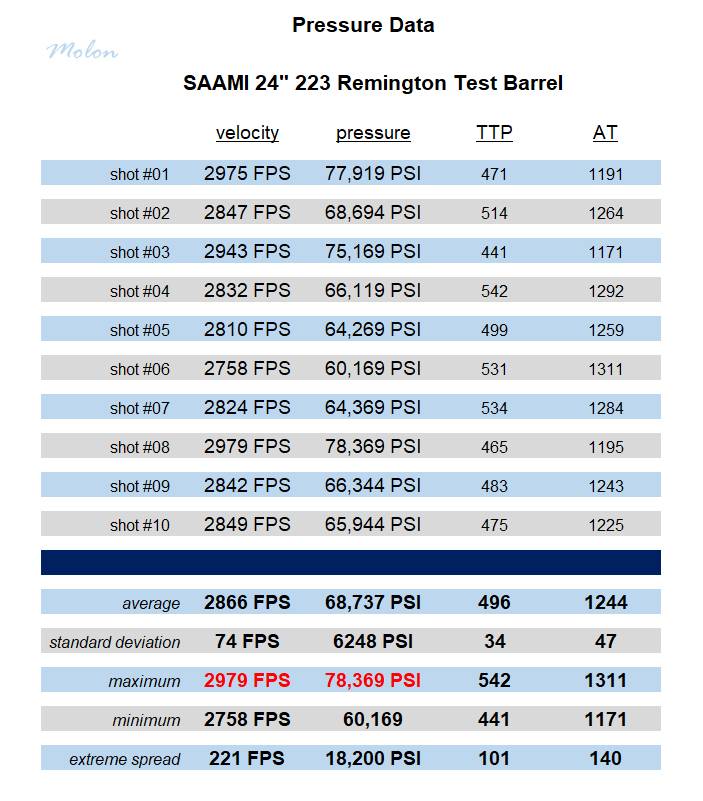Cross posting, sorry, thinking this deserves a more generic chat/thread.
curious... I've seen a couple of people mention they working out the pressure... comparing they load/pressure against the SAAMI numbers, comparing it to numbers as per attached.
how do you work out the pressure?
I've got a friend that has a spread sheet, where he calculates the burn rate/time, and compare that against the projected speed of the bullet, determining that against the time that the bullet is in the barrel, and relating that to the burn rate, determine how much unburned power goes out the front (aka wastage).
other than quickload and GRT, does anyone have a spread sheet that does this..
Interested in getting to understand, work out the numbers myself.
G
curious... I've seen a couple of people mention they working out the pressure... comparing they load/pressure against the SAAMI numbers, comparing it to numbers as per attached.
how do you work out the pressure?
I've got a friend that has a spread sheet, where he calculates the burn rate/time, and compare that against the projected speed of the bullet, determining that against the time that the bullet is in the barrel, and relating that to the burn rate, determine how much unburned power goes out the front (aka wastage).
other than quickload and GRT, does anyone have a spread sheet that does this..
Interested in getting to understand, work out the numbers myself.
G


